When & How to Prune Your Hydrangea
One of the most commonly asked questions about is when and how to prune hydrangeas. Let’s delve into that question here using three simple steps.
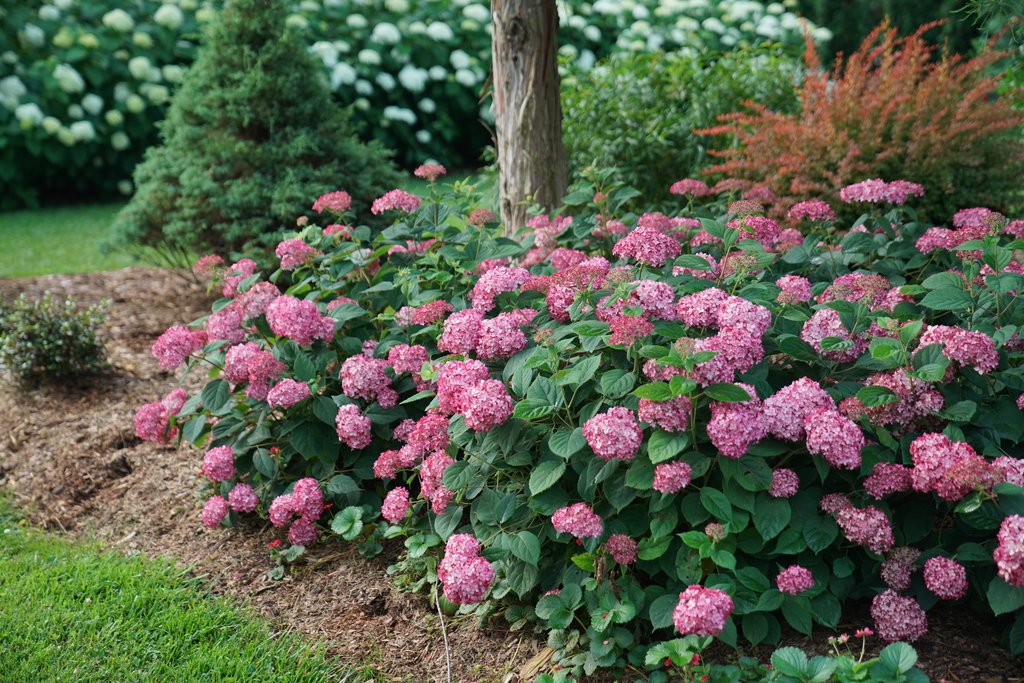 Itching to prune your hydrangeas? Follow these 3 steps to ensure your success.
Itching to prune your hydrangeas? Follow these 3 steps to ensure your success.
STEP 1: Identify which type of hydrangea you have.
Most hydrangeas sold in North America fall into one of five types: bigleaf, mountain, smooth, panicle and oakleaf. Some form their flower buds on old wood, meaning next summer's buds are already present on the branches in fall and winter. Others form their flower buds on new wood, once they begin to grow in spring. This is why it's so important to identify which type of hydrangea you have before you prune: you could inadvertently cut off flower buds and remove all of the blooms for the season. While that doesn't harm the plant, it's definitely disappointing. To help identify which type of hydrangeas you have, follow the detailed explanation of proper hydrangea pruning guides and steps on how and when to prune hydrangeas.
STEP 2: Decide when to prune your hydrangea.
Once you have completed step one, you will know which type of hydrangea you are growing. Then, follow this guide to decide when to prune hydrangeas.
Pruning hydrangeas that bloom on old wood
Most shrubs that bloom on old wood should be pruned immediately after they are done flowering. However, hydrangeas that bloom on old wood finish flowering so late in the season that pruning them after they bloom doesn’t leave enough time for them to regrow and form flower buds for next year. That’s why we suggest that you avoid pruning this type of hydrangea except to remove any completely dead branches in the spring once the plant starts to leaf out.
Examples of hydrangeas that bloom exclusively on old wood include:
- All oakleaf hydrangeas
- Bigleaf hydrangeas that are not rebloomers
- Mountain hydrangeas that are not rebloomers
Pruning hydrangeas that bloom on new wood
Hydrangeas that bloom on new wood can be safely pruned in late fall once the plants have gone dormant or in early spring. Next year’s flower buds won’t be formed until late spring the same year they bloom, so there is no risk of removing the buds if you prune in fall or spring.
If you like the look of dried flower heads in your garden in the wintertime, leave them on and prune them in spring. If you live someplace where there is a heavy snow load or if you prefer a tidier look in winter, another guide on how and when to prune hydrangeas is in late fall to early winter.
Examples of hydrangeas that bloom exclusively on new wood include:
- All smooth hydrangeas
- All panicle hydrangeas
Pruning reblooming hydrangeas
Reblooming hydrangeas produce flowers on both old and new wood. That makes it tough to find the best time to prune hydrangeas without sacrificing some flowers. Reblooming cultivars should be pruned the same way as hydrangeas that bloom on old wood, meaning you should only need to prune out a few (if any) dead branches in the spring once the plant starts to leaf out.
Examples:
- Reblooming varieties of bigleaf hydrangeas
- Reblooming varieties of mountain hydrangeas
STEP 3: Know how much to prune your hydrangea.
Generally, it is safe to prune as much as one-third off of your hydrangea that blooms on new wood. For example, if your hydrangea is six feet tall, it is safe to prune as much as two feet off the top and sides. We do not recommend pruning more drastically than 30% for two reasons:
- Pruning it further removes too much of the sturdy framework that keeps the plant standing upright.
- The plant needs to retain enough foliage to make an adequate amount of food to support the root system.
When you prune, make your cut just above a set of large, healthy leaves. If a branch is broken or dead, it can be removed completely. If in doubt, don’t prune! No hydrangea requires pruning to grow and bloom well. This advice aligns with any reliable hydrangea pruning guide.
Don’t make this mistake when pruning your hydrangeas!
One common misconception about hydrangeas is that you can prune them throughout the season to keep them shorter. The best hydrangea pruning guide is not do it or you’ll risk cutting off the flower buds. Pruning your hydrangeas to reduce their height isn’t effective because they will grow right back to their original size, or even larger because the act of pruning stimulates new growth. Instead, transplant your too-large, still-dormant hydrangea to a new spot in early spring and replace it with a variety that naturally stays shorter.
An In-Depth Look at Hydrangea Traits
Traits of Bigleaf Hydrangeas (Hydrangea macrophylla)
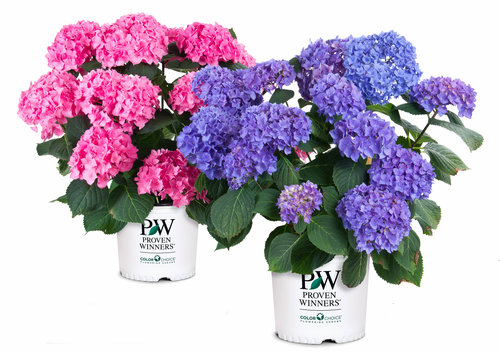
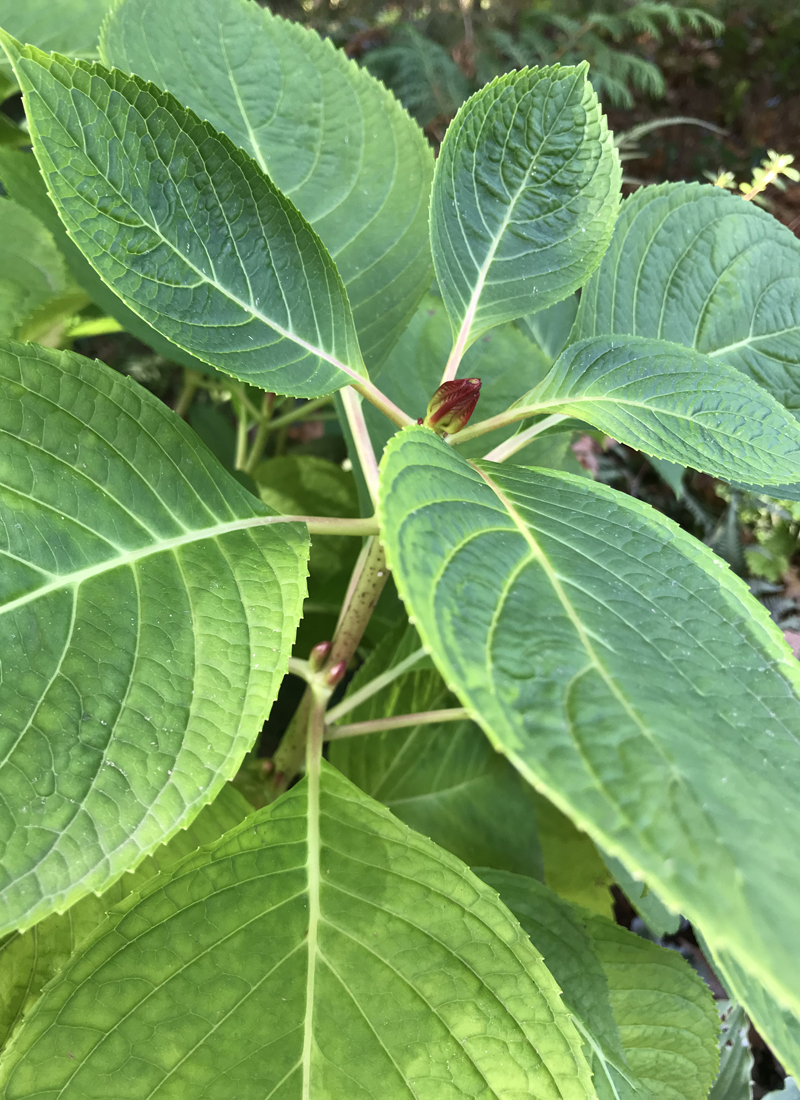
Bigleaf hydrangeas bloom in midsummer with large, fluffy, round mophead flowers that are either pink or blue. They have broad, thick, textured foliage and stout, green stems. A couple of popular series of bigleaf hydrangeas include Let’s Dance® and Wee Bit®.
Bigleaf hydrangeas bloom on old wood, which means they set their flower buds for next summer in the leaf axils of the stems the year before they bloom. In the picture above taken in October, you can see the reddish buds in the axils up the stem.
Many of the newer bigleaf hydrangeas are rebloomers which means that in addition to blooming on old wood, they also form more flower buds on new growth and bloom a second time that season.
Traits of Mountain Hydrangeas (Hydrangea serrata)
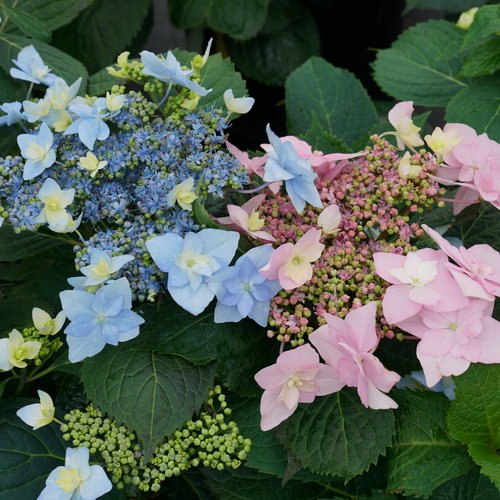
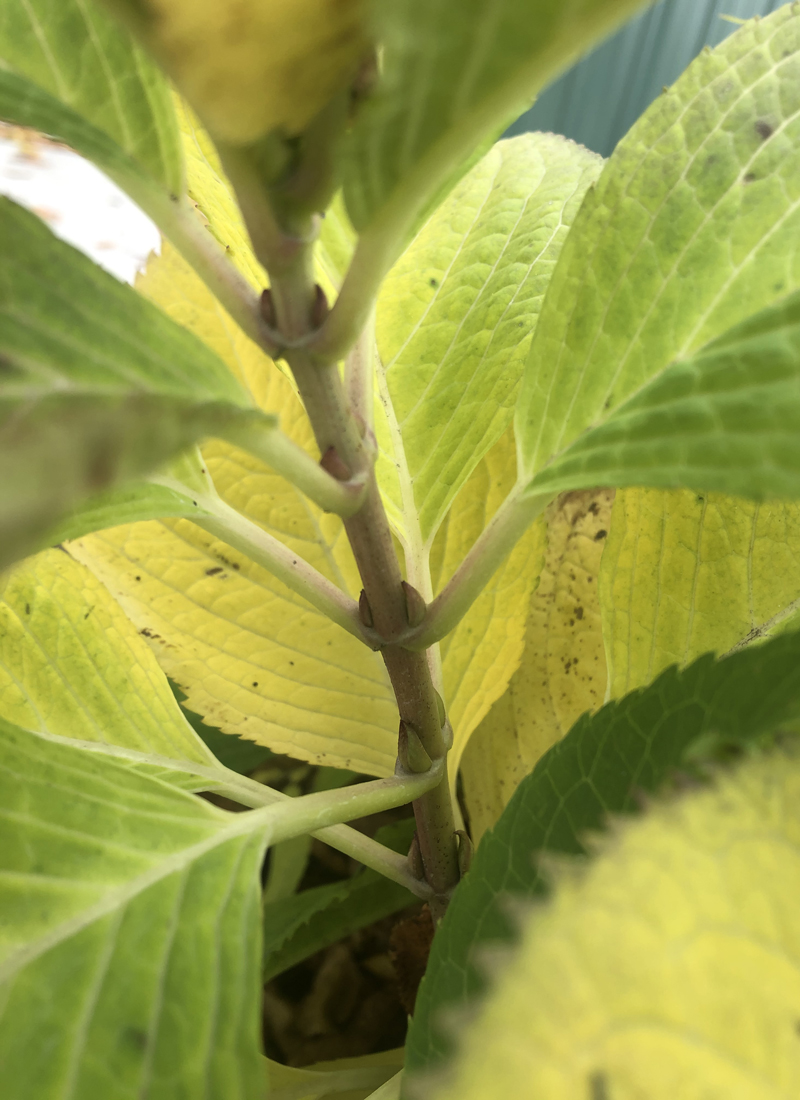
Mountain hydrangeas bloom in midsummer with pink or blue lacecap style flowers. Their foliage looks very similar to bigleaf hydrangeas with broad, thick textured leaves and stout, green stems. Our Tuff Stuff™ series of reblooming mountain hydrangeas have extra cold hardy stems and buds, which helps them bloom reliably each year.
Mountain hydrangeas bloom first on old wood in early to midsummer. Reblooming varieties form more flower buds on new growth and bloom a second time that season. In the picture above taken in October showing its golden fall color, you can see the pointy buds hugging the stem in each leaf axil.
Traits of Smooth Hydrangeas (Hydrangea arborescens)
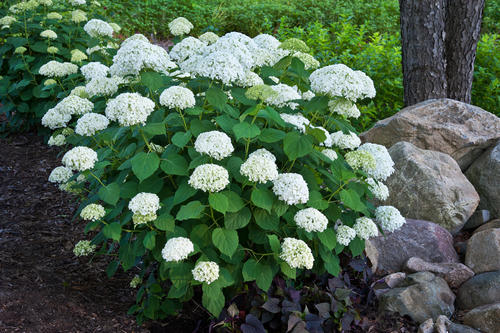
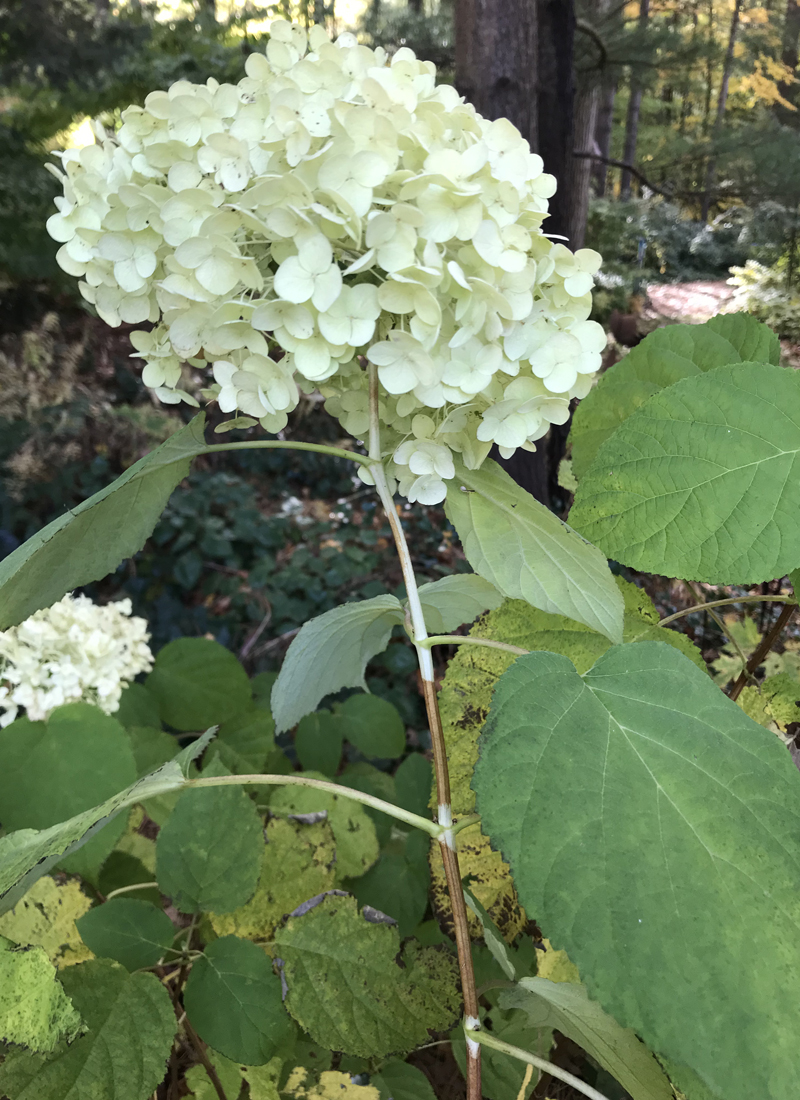
Smooth hydrangeas bloom earlier than bigleaf or mountain hydrangeas and bear either white or pink flowers. Most smooth hydrangeas bear round mophead flowers but a few cultivars have lacecap style blossoms. Their foliage is matte textured and of thinner substance than bigleaf or mountain hydrangeas. Their woody brown stems are a bit more slender, too.
‘Annabelle’ is a classic smooth hydrangea, but you will find her updated cousin Incrediball® has improved stem strength and larger flowers. The Invincibelle® series of smooth hydrangeas expands the color palette into pinks and greens.
Smooth hydrangeas bloom on new wood, meaning the current season’s growth. This makes them especially suitable for colder climates where there is no chance of the buds being harmed over the winter months because the buds simply don’t exist yet, making this the best time to prune hydrangeas.
You can see in the close up picture above taken in October, there are no buds formed yet in the leaf axils. That’s because smooth hydrangeas don’t form their buds until spring, which is the best time to prune hydrangeas. Then, they bloom soon afterwards in early summer. Where the growing season is long enough, reblooming varieties of smooth hydrangeas will flower on new growth a second time that same season.
Traits of Panicle Hydrangeas (Hydrangea paniculata)
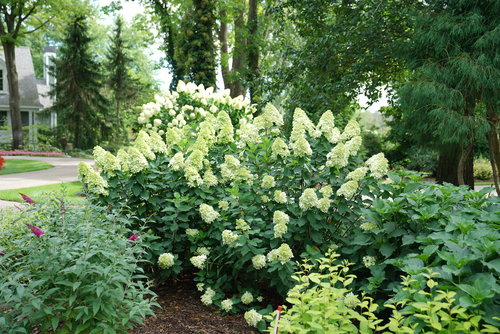
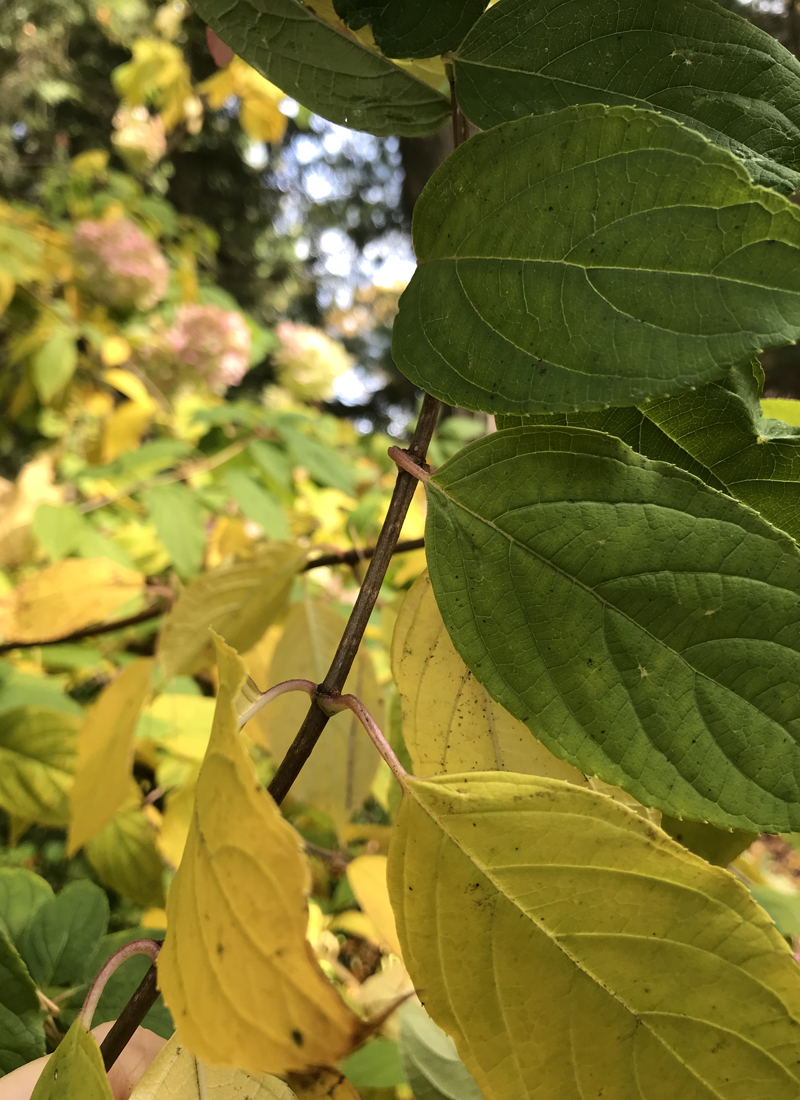
Panicle hydrangeas are often the latest to bloom each season beginning in midsummer to late summer depending on which variety you are growing. They bear white to pale green, cone-shaped flowers that take on pink and red tones in the cool fall weather. Their leaves and stems look similar to smooth hydrangeas, but most panicle hydrangeas grow quite a bit larger. ‘Limelight’ is a classic example of a panicle hydrangea. Fire Light®, Little Lime® and Pinky Winky® are also popular.
Just like smooth hydrangeas, panicle hydrangeas bloom on new wood, making them especially valuable in colder climates where there is no chance of their buds being harmed over the winter. You can see in the close up picture above taken in October that the buds have not yet been formed. They will form their buds in late spring to early summer and bloom later that same year.
Traits of Oakleaf Hydrangeas (Hydrangea quercifolia)
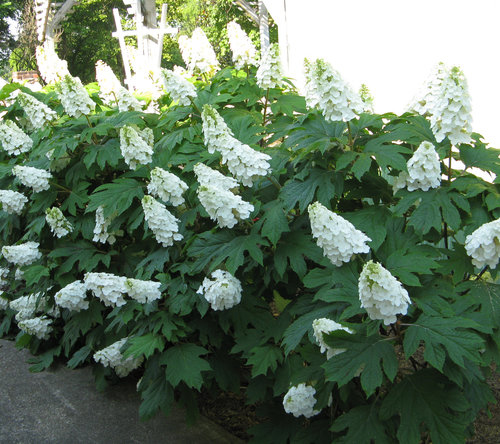
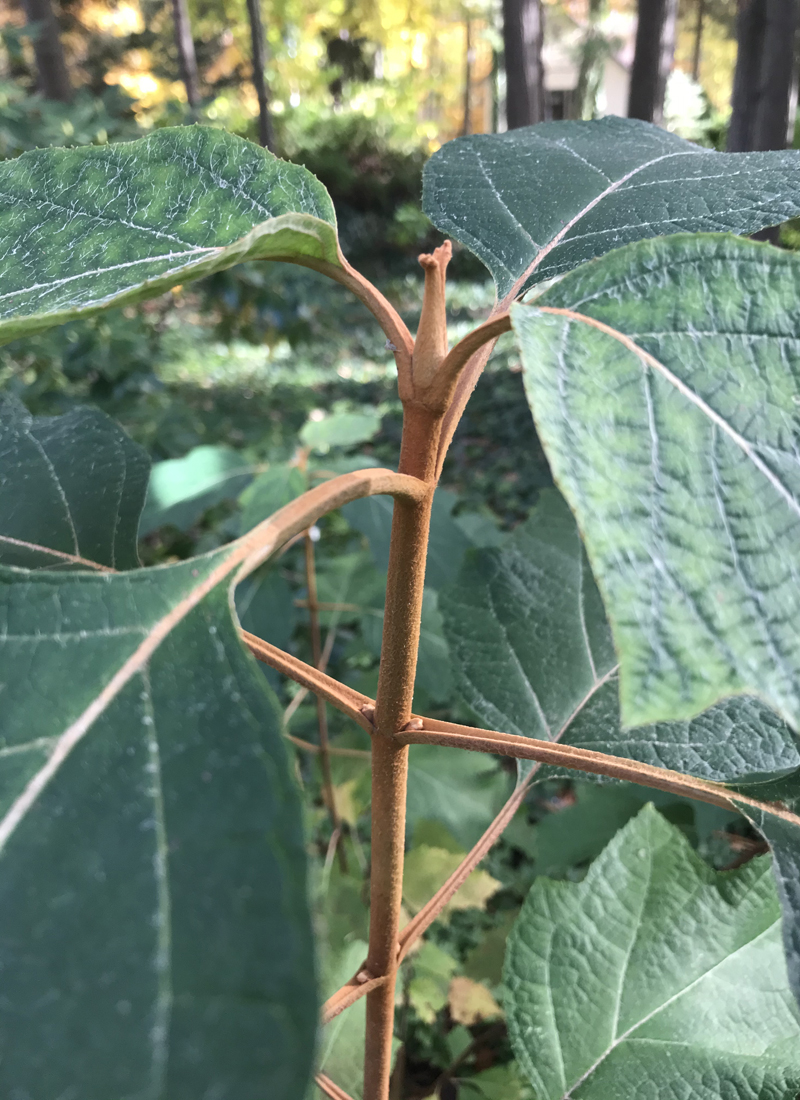
Oakleaf hydrangeas are usually the first hydrangeas to bloom in early summer. They bear large, white, cone-shaped flowers on strong, cinnamon colored stems above a mound of large, textured, oak-shaped leaves. The blossoms often take on pink or red tones in the fall and turn a tawny brown for winter. Typically, oakleaf hydrangeas do not rebloom. Though they develop more slowly than other types, a grouping of mature oakleaf hydrangeas in bloom is a sight to behold and will be a delight for decades to come.
Oakleaf hydrangeas set their flower buds on old wood, which means they form their flower buds for next summer in the leaf axils of the stems the summer before they bloom. In the close-up picture above taken in October, you can see the large terminal bud at the top of the stem and several smaller buds in the leaf axils down the stem are already formed for next year.
Want to learn more?
- Explore our Hydrangeas Demystified guide.
- Watch a video on how to identify your hydrangea.
- Video: Why didn’t my hydrangea bloom?
- Video: How to Prune Your Hydrangea Standard
- See all Proven Winners hydrangeas




